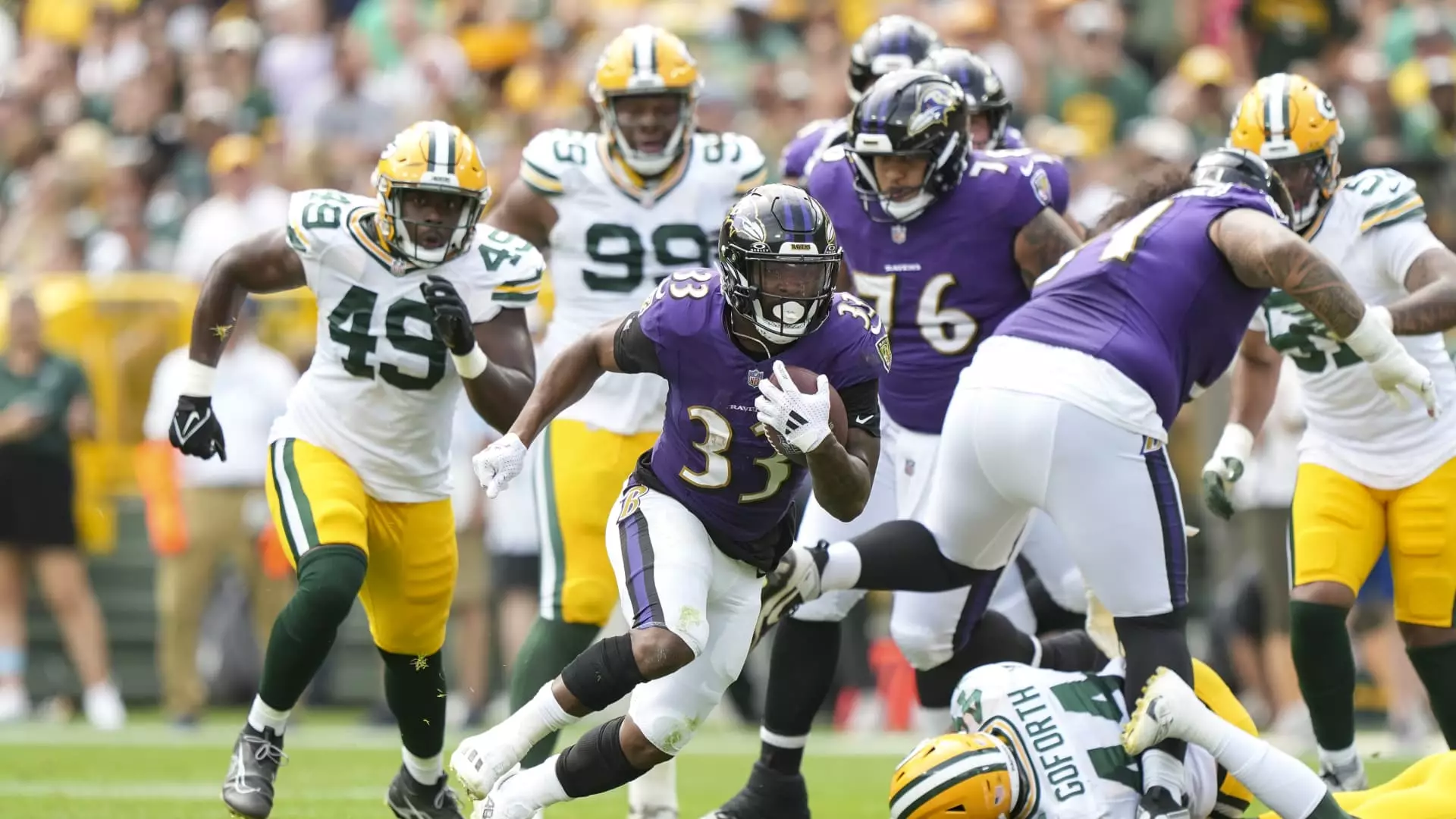The NFL’s Digital Evolution: Streaming as a Game Changer

The National Football League (NFL) has embarked on a transformative journey, leveraging streaming technology to widen its reach and optimize fan engagement around the globe. With significant growth in digital entertainment consumption, the NFL’s pivot towards streaming illustrates a keen understanding of contemporary viewing preferences and the capability to effectively engage with audiences across diverse platforms.
In recent years, the NFL has progressively expanded its digital territory by securing exclusive agreements with major streaming platforms, demonstrating its commitment to evolving alongside technological advancements. As highlighted by Hans Schroeder, the NFL’s executive vice president of media distribution, the league’s trajectory has been thoughtfully planned, with roots tracing back to a notable meeting with Steve Jobs that sparked the realization of mobile technology’s potential impact on live sports broadcasting.
The NFL’s strategic move began in earnest with a massive 11-year, $111 billion media rights deal initiated in 2021. This marked a significant turning point, not just in financial terms, but also in the NFL’s media strategy, integrating streaming as a core component. Streaming platforms like Amazon Prime Video were prominently featured, with “Thursday Night Football” becoming an exclusive offering, thereby aligning with consumer trends that lean toward on-demand content.
The NFL’s dedicated focus on streaming has enabled the league to reach a broader demographic. The success of “Sunday Ticket,” now available through YouTube TV, highlights the NFL’s commitment to adapting its offerings to meet the needs of an increasingly mobile and digitally savvy audience. The shift to platforms like Google’s YouTube and NBCUniversal’s Peacock illustrates the league’s understanding that accessibility is paramount in today’s competitive entertainment landscape.
Transformative milestones, such as the exclusive streaming of the Wild Card game on Peacock, showcase how effective the NFL has been in tapping into new viewing habits. Garnering 27.6 million viewers, this game achieved the status of the most-streamed live event in history, underscoring the NFL’s capacity to captivate large audiences outside traditional broadcast methods. This achievement is not merely a statistic; it reflects a paradigm of viewing experiences that embrace digital engagement.
Moreover, the NFL is actively working to cultivate a global fanbase. The organization has ventured into international markets with games and partnerships designed to enhance its global visibility. Streaming platforms play a crucial role in this endeavor. For instance, the NFL’s inaugural Indian game available exclusively on Peacock drew impressive viewership figures, proving that the league’s content can resonate worldwide.
Schroeder anticipates that the recent partnership with Netflix will further amplify this international outreach, suggesting that the forthcoming three-year collaboration will yield a unique and unprecedented presence in global broadcasting for the NFL. The potential for NFL content to attract international viewers cannot be understated, positioning the league as a global sports powerhouse.
While the push towards streaming is evident, the NFL recognizes the importance of maintaining a balance between traditional broadcasting and digital platforms. Data still indicates that a considerable percentage of sports viewership remains tied to traditional TV channels, which hold substantial audience numbers despite the incremental shift towards streaming services. This hybrid approach ensures that the NFL can cater to both entrenched viewers who favor conventional broadcasts and newcomers who prefer the flexibility offered by streaming.
Furthermore, the NFL has equipped itself for the future by harmonizing its media rights strategy across both landscapes. This allows the league to leverage the substantial legacy partnerships established with traditional media, while simultaneously embracing the inevitable digital evolution showcased by new streaming agreements.
The NFL’s foray into the world of streaming signifies a pivotal shift in how sports are consumed in this modern age. By understanding the evolving landscape of viewer preferences, the league has adapted its strategies to ensure that it remains at the forefront of fan engagement. From securing major deals with prominent streaming platforms to expanding its global reach, the NFL is not just keeping pace with technological changes but harnessing them to cultivate a broader and more diverse fanbase. With continued innovations and a strategic approach, the NFL stands poised to redefine the future of sports viewership for a new generation.





